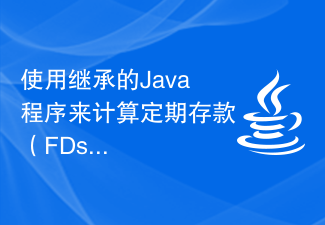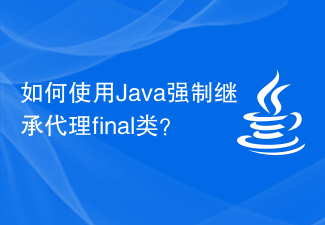 Web Front-end
Web Front-end JS Tutorial
JS Tutorial JavaScript object-oriented prototypes and inheritance_js object-oriented
JavaScript object-oriented prototypes and inheritance_js object-orientedThis article is translated from Microsoft's master Scott Allen Prototypes and Inheritance in JavaScript. This article provides a detailed analysis and explanation of what Prototype is and why inheritance can be achieved through Prototype. It is one of the best works for understanding JS OO. If the translation is not good, please correct it and add it.
2. Text
Object-oriented in JavaScript is different from other languages. It is best to forget the object-oriented concepts you are familiar with before learning. OO in JS is more powerful, more argumentative, and more flexible.
1. Classes and objects
JS is an object-oriented language from a traditional perspective. Properties and behaviors are combined into an object. For example, an array in JS is an object composed of properties and methods (such as push, reverse, pop, etc.).
var myArray = [1, 2];
myArray.push(3);
myArray.reverse();
myArray.pop();
var length = myArray.length;
The problem is: these methods ( Where does push) come from? Some static languages (such as JAVA) use classes to define the structure of an object. But JS is a language without "class" (classless). There is no class called "Array" that defines these methods for each array to inherit. Because JS is dynamic, we can add methods to the object at will when needed. For example, the following code defines an object that represents coordinates in a two-dimensional space and has an add method in it.
var point = {
x : 10,
y : 5,
add: function(otherPoint)
{
this.x = otherPoint.x;
this.y = otherPoint.y;
}
};
We want every point object to have an add method. We also hope that all point objects share an add method without having to add the add method to all point objects. This requires the prototype to appear.
2. About Prototypes
Every object in JS has an implicit attribute (state) - a reference to another object, called the prototype of the object. The array and point we created above Of course, they also contain references to their respective prototypes. The prototype reference is implicit, but it is what ECMAScript has implemented, allowing us to obtain it using the object's _proto_ (in Chrome) property. From a conceptual understanding, we can think of the relationship between objects and prototypes as shown in the figure below:
As developers, we will use the Object.getPrototypeOf function instead of the _proto_ attribute to view the prototype reference of the object. At the time of writing this article, the Object.getPrototypeOf function is supported in Chrome, Firefox, and IE9. In the future, more browsers will support this feature, which is already one of the ECMAScript standards. We can use the following code to prove that myArray and the point object we created before do indeed reference two different prototype objects.
Object.getPrototypeOf(point) != Object .getPrototypeOf(myArray);
In the rest of the article, I will also use _proto_, mainly because _proto_ is more intuitive in diagrams and sentences. But remember that this is not canonical, Object.getPrototypeOf is the recommended method for getting the prototype of an object.
2.1 What makes Prototypes so special?
We already know that the push method of array comes from the prototype object of myArray. Figure 2 is a screenshot in Chrome. We call the Object.getPrototypeOf method to obtain the prototype object of myArray.
Figure 2
Notice that the prototype object of myArray contains many methods, such as push, pop and reverse, which we used in the beginning code of. The prototype object is the only owner of the push method, but how is this method called through myArray?
myArray.push(3);
To understand how it is implemented, the first step is to realize that Protytype is not special at all. Prototypes are objects. We can add methods and properties to these objects like any other JS object. But at the same time, Prototype is also a special object.
Prototype is special because of the following rules: when we notify JS that we want to call the push method on an object or read a certain property, the interpreter (runtime) first looks for the object itself method or property. If the interpreter does not find the method (or attribute), it will follow the _proto_ reference to find each member in the object's prototype. When we call the push method in myArray, JS does not find push in the myArray object, but finds push in the prototype object of myArray, that is, the push method is called (Figure 3).
Figure 3
The behavior I described is essentially that the object itself inherits all methods and properties from its prototype. We don't need to use classes to implement this inheritance relationship in JS. That is, a JS object inherits properties from its prototype.
Figure 3 also tells us that each array object can maintain its own state and members. If we need the length property of myArray, JS will find the length value from myArray without looking for it in the prototype. We can use this feature to "override" a method, that is, put the method that needs to be overridden (like push) into myArray's own object. This can effectively hide the push method in the prototype.
3. Sharing Prototype
The real magic of Prototype in JS is that multiple objects can reference the same prototype object. For example, we create two arrays:
var myArray = [ 1, 2];var yourArray = [4, 5, 6];
The two arrays will share the same prototype object, the following code will return true
Object.getPrototypeOf(myArray) === Object.getPrototypeOf(yourArray);
If we call the push method on two arrays, JS will call the push method in their common prototype.
Prototype objects give us this inheritance feature in JS, they also allow us to share method implementations. Prototypes are also chained. In other words, a prototype is an object, and a prototype object can also have a reference to another prototype object. As you can see from Figure 2, the _proto_ attribute of prototype is a non-null value and points to another prototype. When JS starts to look for member variables, such as the push method, it will check each of these prototype references. Object until this object is found or the end of the chain is reached. This chain method increases the flexibility of inheritance and sharing in JS.
Next you may ask: How do I set the prototype reference of a custom object? For example, for the object point we created before, how do we add an add method to the prototype object so that all point objects can inherit it? Before we answer this question, let’s first understand the functions in JS.
4. About Funciton
Functions are also objects in JS. Functions have many important features in JS, and we can’t list them all in this article. But things like assigning a function to a variable or using a function as a parameter of another function are very basic methods in today's JS programming.
What we need to pay attention to is: because the function is an object, it has methods, properties and a reference to a prototype object. Let’s discuss the meaning of the following code:
// this will return true:
typeof (Array) === "function"
// and so will this:
Object.getPrototypeOf(Array) === Object.getPrototypeOf(function () { })
// and this, too:
Array.prototype != null
The first line of code proves that Array is a function in JS. Later we will see how to call the Array function to create a new array object.
The second line of code proves that the Array object and the function object refer to the same prototype, just like we saw before that all array objects share a prototype.
The last line proves that the Array function has a prototype attribute. Do not confuse this prototype attribute with the _proto_ attribute. Their purpose of use and the objects they point to are different.
// true
Array.prototype == Object .getPrototypeOf(myArray)
// also true
Array.prototype == Object.getPrototypeOf(yourArray);
We redraw the previous picture with the new knowledge:
Figure 5
Now we have to create an array object. One of the methods is:// create a new, empty object
var o = {};
// inherit from the same prototype as an array object
o.__proto__ = Array.prototype;
// now we can invoke any of the array methods ...
o.push(3);
Although the above code looks good, the problem is that not every JS environment supports the _proto_ attribute of the object. Fortunately, JS has a standard built-in mechanism for creating new objects and setting the object's _proto_ property. This is the "new" operator.
var o = new Array();
o .push(3);
The "new" operator has three important tasks in JS: First, it creates a new empty object. Next, it sets the _proto_ attribute of this new object to point to the calling function's prototype attribute. Finally, the calling function is executed and the "this" pointer points to the new object. If we expand the above two lines of code, we will get the following code:
var o = {};
o.__proto__ = Array.prototype;
Array.call(o);
o.push(3);
The "call" method of a function allows you to call a function and specify that "this" in the function points to the new object passed in. Of course, we also want to create our own objects through the above method to achieve object inheritance. This function is what we are familiar with - the constructor.
5. Constructor
The constructor is a common JS function object with two unique identifiers:
1. The first letter is capitalized (easy to identify).
2. Use new operator connection to construct a new object.
Array is a constructor - the Array function is connected with new and the first letter is capitalized. The Array function in JS is built-in, but anyone can create their own constructor. In fact, it's finally time to create a constructor for the point object.
var Point = function (x, y) {
this.x = x;
this.y = y;
this.add = function (otherPoint) {
this.x = otherPoint.x;
this.y = otherPoint .y;
}
}
var p1 = new Point(3, 4);
var p2 = new Point(8, 6);
p1.add(p2);
In the above code, we use the new operator and the Point function to construct a point object. In memory you can think of the final result as shown in Figure 6.
Figure 6
The problem now is that the add method exists in every point object. Given what we know about prototypes, it would be a better choice to add the add method to Point.prototype (without having to copy the code for the add method into every object). In order to achieve this purpose, we need to make some modifications to the Point.prototype object.
var Point = function (x, y) {
this.x = x;
this.y = y;
}
Point.prototype.add = function (otherPoint) {
this.x = otherPoint.x;
this.y = otherPoint.y;
}
var p1 = new Point(3, 4);
var p2 = new Point(8, 6);
p1.add(p2) ;
Okay! We have implemented inheritance in JS using prototype!
6. Summary
I hope this article can help you clear up the fog of prototype. Of course, this is just an introduction to the powerful and flexible prototype. I hope readers can explore and discover more about prototypes on their own.
 解决PHP报错:继承父类时遇到的问题Aug 17, 2023 pm 01:33 PM
解决PHP报错:继承父类时遇到的问题Aug 17, 2023 pm 01:33 PM解决PHP报错:继承父类时遇到的问题在PHP中,继承是一种重要的面向对象编程的特性。通过继承,我们能够重用已有的代码,并且能够在不修改原有代码的情况下,对其进行扩展和改进。尽管继承在开发中应用广泛,但有时候在继承父类时可能会遇到一些报错问题,本文将围绕解决继承父类时遇到的常见问题进行讨论,并提供相应的代码示例。问题一:未找到父类在继承父类的过程中,如果系统无
 使用继承的Java程序来计算定期存款(FDs)和定期存款(RDs)的利息Aug 20, 2023 pm 10:49 PM
使用继承的Java程序来计算定期存款(FDs)和定期存款(RDs)的利息Aug 20, 2023 pm 10:49 PM继承是一个概念,它允许我们从一个类访问另一个类的属性和行为。被继承方法和成员变量的类被称为超类或父类,而继承这些方法和成员变量的类被称为子类或子类。在Java中,我们使用“extends”关键字来继承一个类。在本文中,我们将讨论使用继承来计算定期存款和定期存款的利息的Java程序。首先,在您的本地机器IDE中创建这四个Java文件-Acnt.java−这个文件将包含一个抽象类‘Acnt’,用于存储账户详情,如利率和金额。它还将具有一个带有参数‘amnt’的抽象方法‘calcIntrst’,用于计
 如何在PHP中使用多态和继承来处理数据类型Jul 15, 2023 pm 07:41 PM
如何在PHP中使用多态和继承来处理数据类型Jul 15, 2023 pm 07:41 PM如何在PHP中使用多态和继承来处理数据类型引言:在PHP中,多态和继承是两个重要的面向对象编程(OOP)概念。通过使用多态和继承,我们可以更加灵活地处理不同的数据类型。本文将介绍如何在PHP中使用多态和继承来处理数据类型,并通过代码示例展示它们的实际应用。一、继承的基本概念继承是面向对象编程中的一种重要概念,它允许我们创建一个类,该类可以继承父类的属性和方法
 PHP中的封装技术及应用Oct 12, 2023 pm 01:43 PM
PHP中的封装技术及应用Oct 12, 2023 pm 01:43 PMPHP中的封装技术及应用封装是面向对象编程中的一个重要概念,它指的是将数据和对数据的操作封装在一起,以便提供对外部程序的统一访问接口。在PHP中,封装可以通过访问控制修饰符和类的定义来实现。本文将介绍PHP中的封装技术及其应用场景,并提供一些具体的代码示例。一、封装的访问控制修饰符在PHP中,封装主要通过访问控制修饰符来实现。PHP提供了三个访问控制修饰符,
 PHP中的多重继承Aug 23, 2023 pm 05:53 PM
PHP中的多重继承Aug 23, 2023 pm 05:53 PM继承:继承是面向对象编程(OOP)中的一个基本概念,它允许类从其他类继承属性和行为。它是一种基于现有类创建新类的机制,促进代码重用并建立类之间的层次关系。继承基于"父子"或"超类-子类"关系的概念。从中继承的类被称为超类或基类,而继承超类的类被称为子类或派生类。子类继承其超类的所有属性(变量)和方法(函数),还可以添加自己独特的属性和方法或覆盖继承的属性和方法继承的类型在面向对象编程(OOP)中,继承是一个基本概念,它允许类从其他类中继承属性和行为。它促进
 如何使用Java强制继承代理final类?Sep 06, 2023 pm 01:27 PM
如何使用Java强制继承代理final类?Sep 06, 2023 pm 01:27 PM如何使用Java强制继承代理final类?在Java中,final关键字用于修饰类、方法和变量,表示它们不可被继承、重写和修改。然而,在某些情况下,我们可能需要强制继承一个final类,以实现特定的需求。本文将讨论如何使用代理模式来实现这样的功能。代理模式是一种结构型设计模式,它允许我们创建一个中间对象(代理对象),该对象可以控制对另一个对象(被代理对象)的
 继承、多态与接口:PHP面向对象的三大特性May 11, 2023 pm 03:45 PM
继承、多态与接口:PHP面向对象的三大特性May 11, 2023 pm 03:45 PMPHP是一种服务器端编程语言,自PHP5之后开始支持面向对象编程(OOP)。OOP的核心思想是将数据和行为封装在对象中,以提高程序的可维护性和可扩展性。在PHP中,面向对象编程具有三大特性:继承、多态与接口。一、继承继承是指一个类可以从另一个类中继承属性和方法。被继承的类称为父类或基类,继承的类称为子类或派生类。子类可以通过继承获得父类中的属性和方法,并且可
 如何在Go语言中实现封装和继承Jul 23, 2023 pm 08:17 PM
如何在Go语言中实现封装和继承Jul 23, 2023 pm 08:17 PM如何在Go语言中实现封装和继承封装和继承是面向对象编程中的两个重要概念,它们可以使代码更加模块化和可维护,同时也为代码的复用提供了便利。本文将介绍在Go语言中如何实现封装和继承,并提供相应的代码示例。封装封装是将数据和功能进行封装,隐藏实现的细节,只暴露必要的接口给外部使用。在Go语言中,封装是通过导出和非导出标识符来实现的。首字母大写的标识符可以被其他包访


Hot AI Tools

Undresser.AI Undress
AI-powered app for creating realistic nude photos

AI Clothes Remover
Online AI tool for removing clothes from photos.

Undress AI Tool
Undress images for free

Clothoff.io
AI clothes remover

AI Hentai Generator
Generate AI Hentai for free.

Hot Article

Hot Tools

MantisBT
Mantis is an easy-to-deploy web-based defect tracking tool designed to aid in product defect tracking. It requires PHP, MySQL and a web server. Check out our demo and hosting services.

Atom editor mac version download
The most popular open source editor

Dreamweaver Mac version
Visual web development tools

Notepad++7.3.1
Easy-to-use and free code editor

SublimeText3 English version
Recommended: Win version, supports code prompts!












